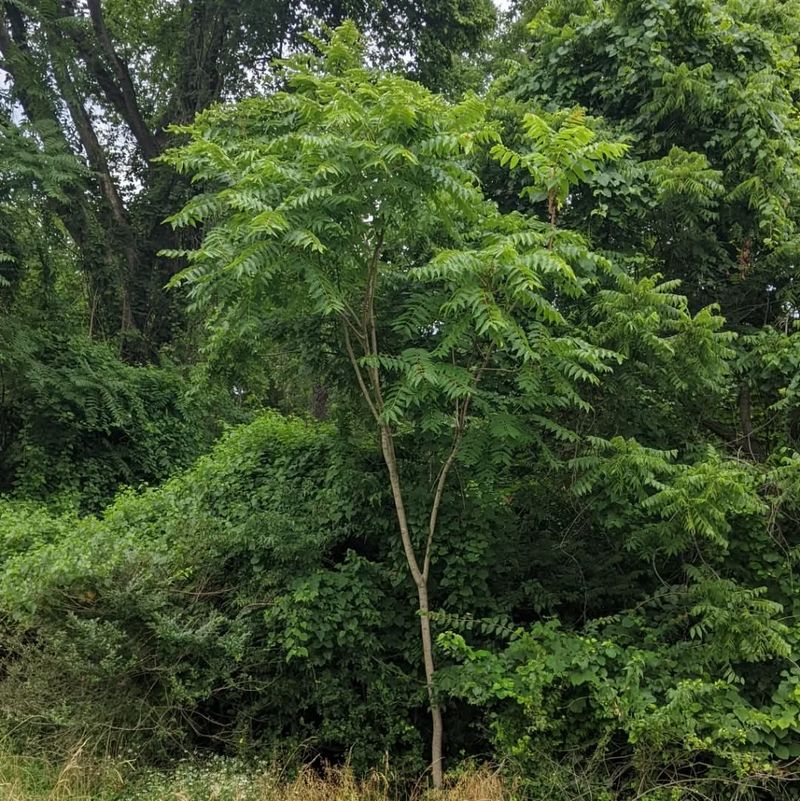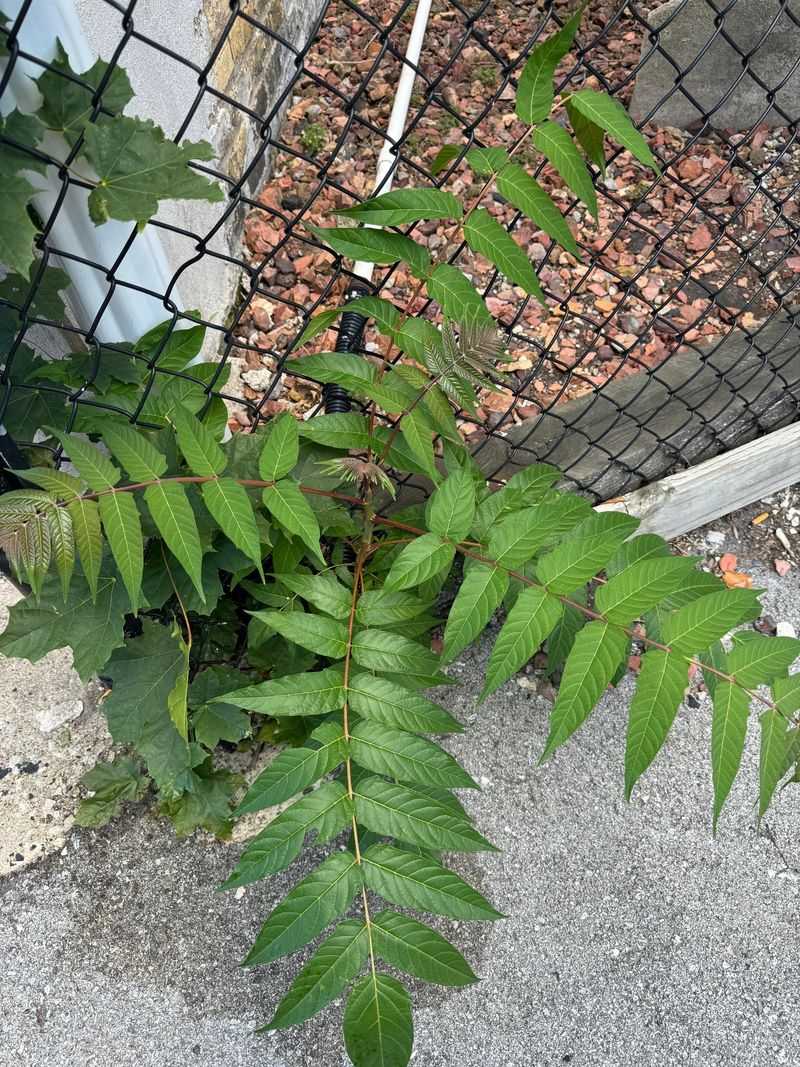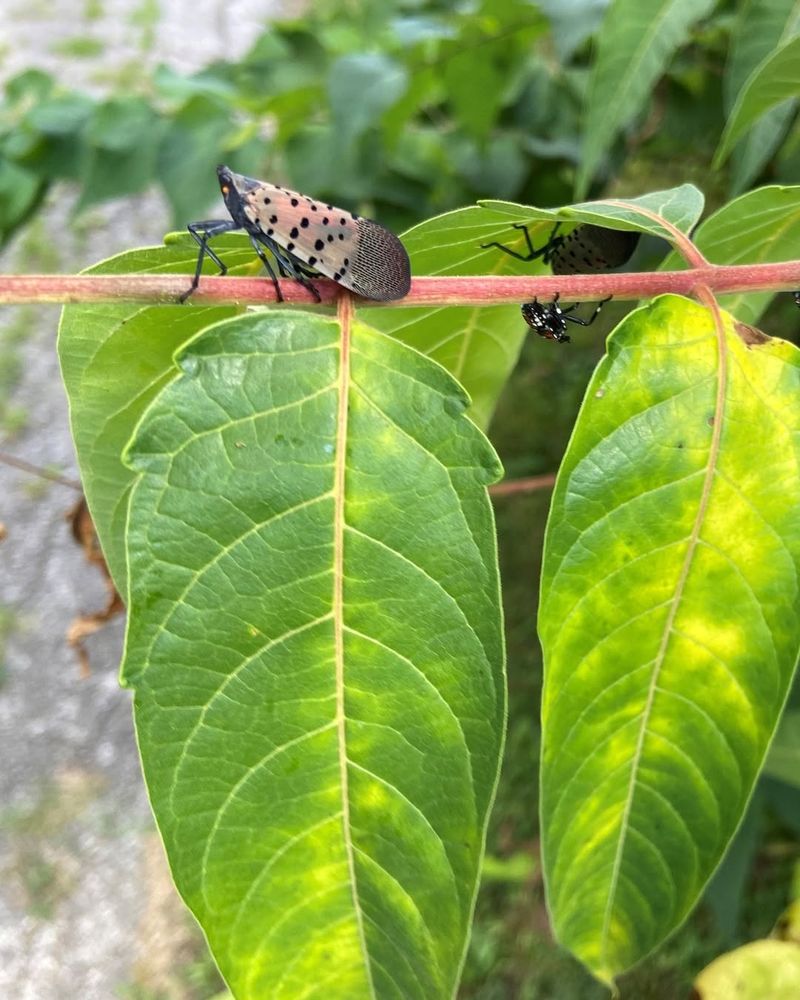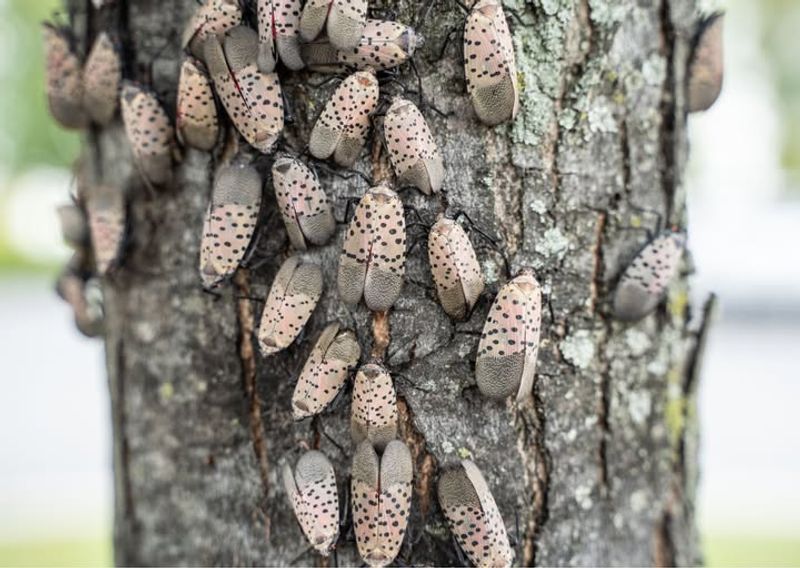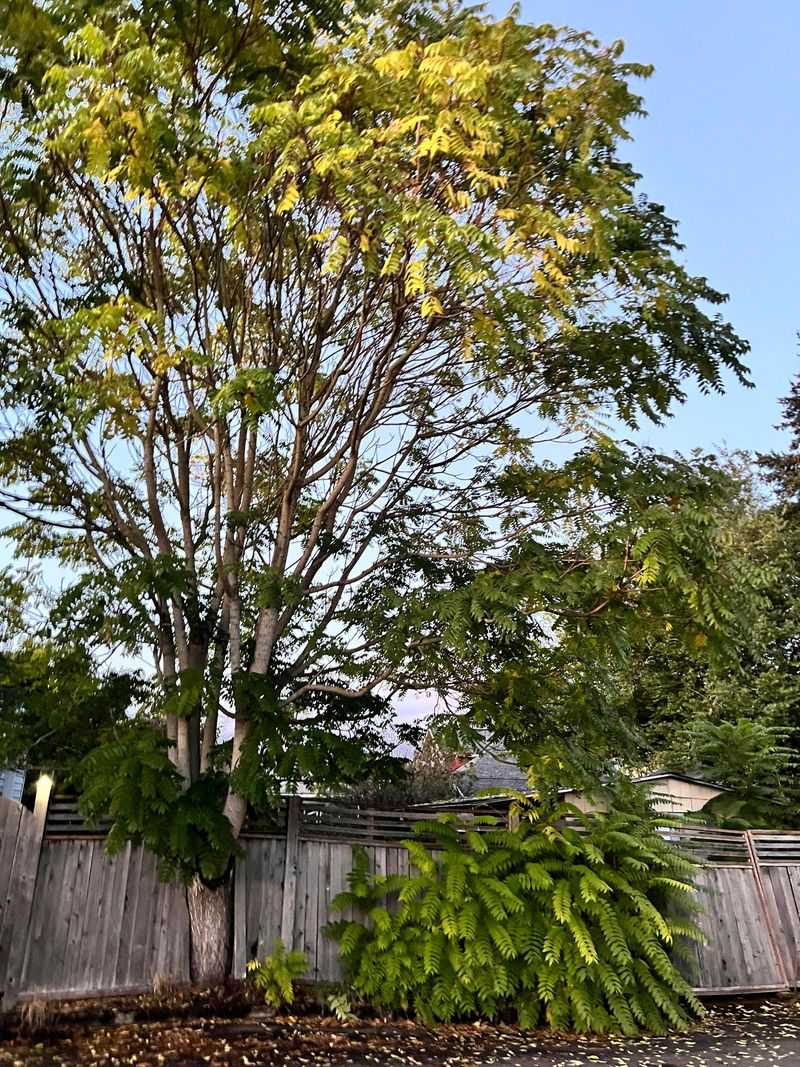The Tree of Heaven might sound like a blessing, but for North Carolina gardeners, it’s anything but. This fast-growing tree quickly turns from pretty to problematic.
Despite its inviting name, it’s an aggressive invader that spreads fast and chokes out native plants. It’s known for damaging sidewalks, foundations, and even local ecosystems.
I’ve seen it cause more trouble than it’s worth—once it’s in, it’s hard to remove. Before adding it to your fall planting list, it’s worth knowing why it’s earned such a bad reputation.
1. Aggressive Root Systems Damage Property
Underground chaos starts the moment these trees establish themselves in your yard. Their roots spread like wildfire, cracking sidewalks, breaking through foundations, and destroying underground pipes without warning.
Homeowners often face thousands of dollars in repairs after just a few years. The roots can travel over 50 feet from the trunk, making it nearly impossible to protect nearby structures.
Even removing the tree doesn’t solve the problem completely since the roots continue growing.
2. Crowds Out Native North Carolina Plants
Native wildflowers, shrubs, and trees struggle to survive when this invasive bully moves into the neighborhood. It grows so quickly that it steals sunlight, water, and nutrients from everything around it.
Beautiful dogwoods, redbuds, and other beloved Carolina species simply cannot compete. Within just a few seasons, your diverse garden ecosystem transforms into a Tree of Heaven monoculture.
Local wildlife loses important food sources and shelter when native plants disappear.
3. Releases Toxic Chemicals Into Soil
Something sinister happens beneath the surface that most gardeners never see coming. Tree of Heaven roots release allelopathic chemicals that actually poison the soil around them, preventing other plants from growing.
Your vegetable garden, flower beds, and lawn will mysteriously struggle. These toxins remain in the ground even after removal, contaminating your soil for months.
Organic gardeners find this especially frustrating since chemical warfare goes against their philosophy.
4. Produces Millions Of Seeds Annually
Picture a single female tree dropping up to 300,000 seeds in one year, and you’ll understand the magnitude of this problem. Wind carries these seeds across entire neighborhoods, turning one tree into a community-wide invasion.
Every crack in your driveway, gap in your fence, and bare spot in your lawn becomes a potential nursery. Pulling seedlings becomes a never-ending weekend chore that exhausts even the most dedicated gardeners.
Your neighbors won’t appreciate the gift either.
5. Emits Foul Smell When Damaged
Breaking a branch or crushing the leaves releases an odor that’s been compared to rotten peanut butter mixed with cat urine. Seriously, it’s that bad and lingers for hours.
Mowing near these trees or pruning them becomes an unforgettable and unpleasant experience. The smell clings to your clothes, tools, and hands despite washing.
Hosting outdoor gatherings becomes embarrassing when guests wrinkle their noses at the mysterious stench drifting through your yard.
6. Hosts Spotted Lanternfly Infestations
This destructive insect pest absolutely loves Tree of Heaven and uses it as its preferred breeding ground. North Carolina has been battling spotted lanternfly invasions, and these trees make the problem exponentially worse.
The bugs then spread to fruit trees, grapevines, and ornamental plants throughout your property. State agricultural officials actively encourage removal specifically to control lanternfly populations.
Keeping one means you’re essentially running a pest production facility in your backyard.
7. Difficult And Expensive To Remove
Getting rid of established trees requires professional help and persistent effort over several years. Simply cutting them down triggers aggressive resprouting, sometimes producing dozens of new shoots from a single stump.
Herbicide treatments must be timed perfectly and repeated multiple times to achieve success. Root fragments left behind can generate new trees even after you think the battle is won.
Professional removal often costs between $500 and $2,000 depending on tree size and location accessibility.



